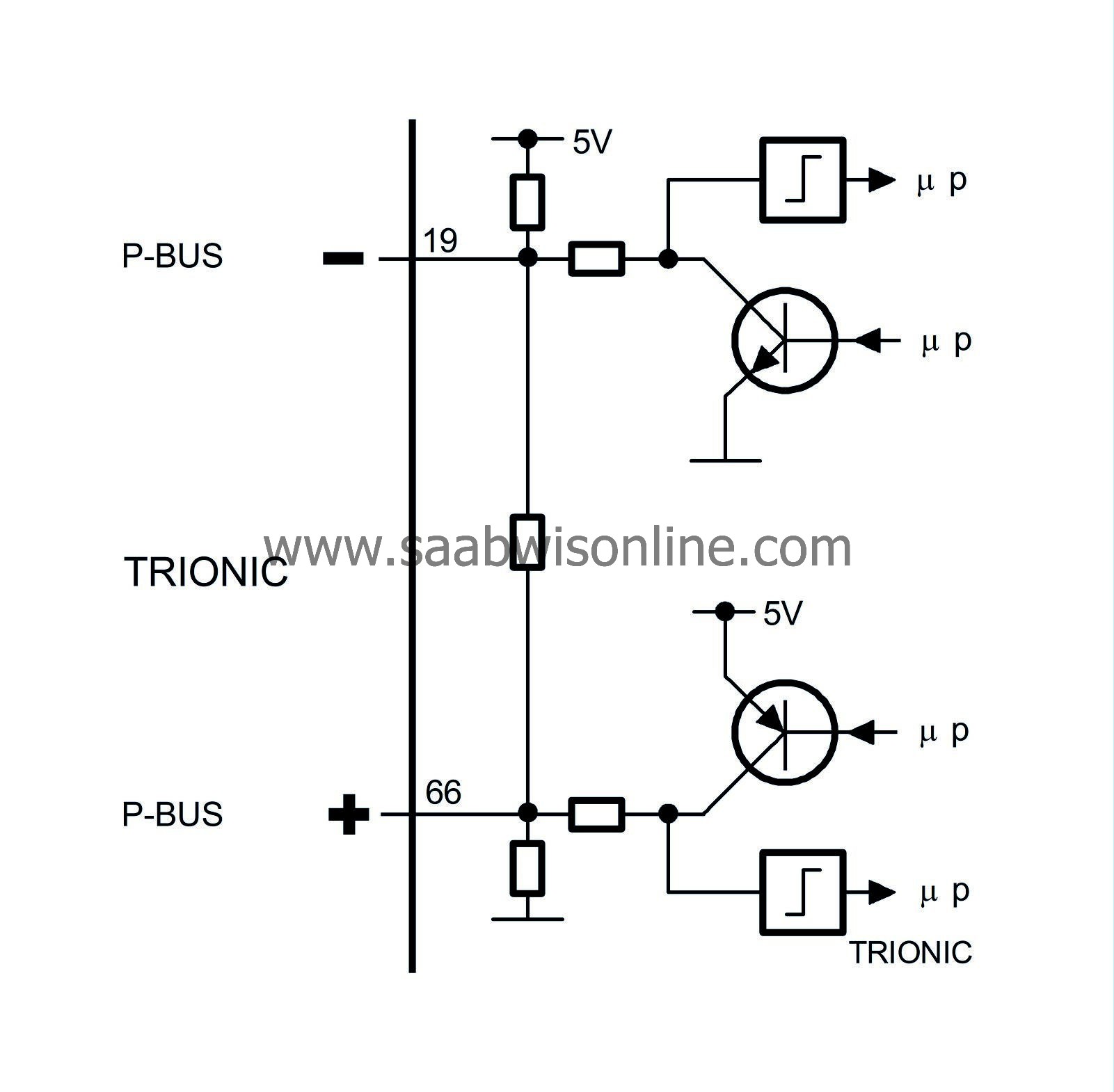Transmission, P and I busses (2-lead)
| Transmission, P and I busses (2-lead) |

A transmitting control module sends a message by transmitting ones or zeroes in a particular order. The control module only transmits if no other is transmitting. The ones and zeroes are transmitted according to a predetermined protocol so that all the control modules interpret the information in the same way. The message conveys what is being transmitted and the value thereof; e.g. ”Coolant temperature 100°C”, or ”A/C ON”.
The two bus leads are supplied with approximately 2.5 V from each control module. The voltage is achieved by means of three resistors connected in series between 5V and ground. The middle resistor causes the voltage on bus+ to be slightly lower than bus- when no message is being transmitted.
When the voltage is about 2.5V on both leads during a specified interval (on the P-bus, 2 millionths of a second) a one is transmitted. In order to send a zero, the control module pulls the bus+ up to nearly 5V and pulls down bus- almost to ground for the same length of time.
Note that a long series of ones is the same as not transmitting a message.



